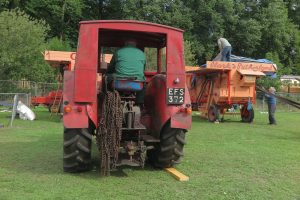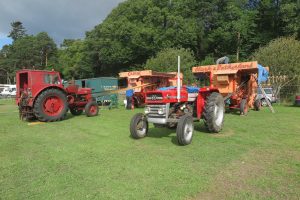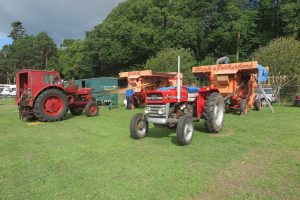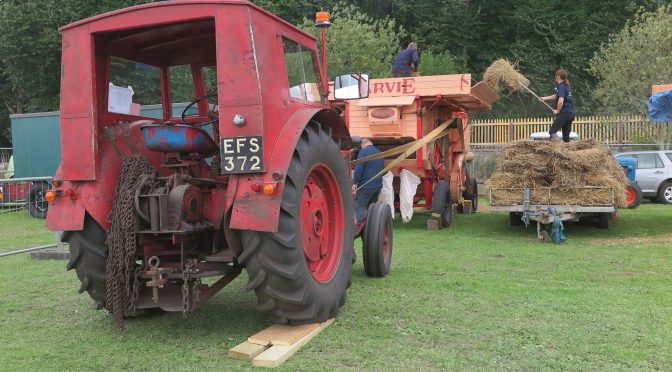The New Statistical Account of Scotland published in the 1830s and 1840s includes a great deal of information on agriculture including farming practices and implements and machines for each of the parishes throughout Scotland.
In East Lothian, one of the leading agricultural districts, there are a number of reports on threshing mills, the use of steam in threshing and material culture of the stack yard.

In the parish of Dunbar the minister, Rev John Jaffrey, included a detailed account of the use of stack stones. He wrote “pillars, whereon to build the corn in the barnyard, should have been more generally introduced. Some individuals have them of stone, but cast-iron ones are the best. They have a cover with a turned-down edge -which renders them a complete defence against vermin. They admit a free circulation of air to the stacks, and the saving is beyond calculation. “
Steam threshing was regarded to be a great improvement. in Dunbar the “thrashing of corn by steam is the greatest improvement which has lately been introduced here.”

In the parish of Ormiston, the Minister wrote “about twelve years ago, a thrashing mill was erected by the tenant of the mill lands, which has been let out to the villages, and been of the greatest service to the place. Before that time, all the grain about the village was thrashed by the flail, whereas very little is thrashed in that way. Several of the tenants have had thrashing mills erected within these few years; and there is now not a farm of any consequence without one. The tenant of the Murrays, six years ago, erected a steam engine upon that farm for thrashing his crop, which answers the purpose remarkably well.”
In the parish of Gladsmuir “steam engines for thrashing the crops have been erected on many of the farms, and there are at present in the parish no less than ten employed for that purpose. It is in contemplation to erect more.”
In Dirleton, “the steam engine for thrashing is coming into general use, there being now nine in the parish.”

The Statistical Accounts of Scotland (in two series – 1890s and 1830s and 1840s) can be searched at http://stataccscot.edina.ac.uk/static/statacc/dist/home
The photographs were taken at the Deeside rally, August 2018.
